Members of the media were invited to see a significant archaeological dig at the site of the new Lake Barkley Bridge in Canton. Having an interest in archaeology and history myself, I made a special point to attend this question and answer session with local and state archaeologists.
Bridges at both Kentucky Lake and Lake Barkley along US 68 are in the process of getting replaced. The existing structures are pushing 85 years old and are way past their prime.
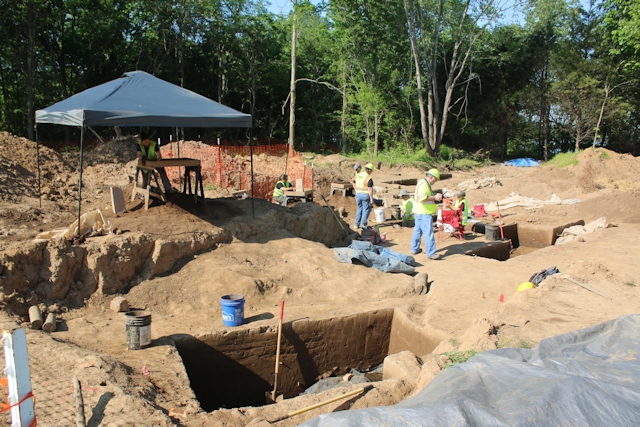
State law requires archaeology research at road construction projects. In October 2014, a significant ancient site was found at Canton on the east end of the Lake Barkley bridge project.
At my arrival, I found students from area universities working at the site. I spoke with Michael Loughlin, project archaeologist at the University of Kentucky, about the significance of the site.
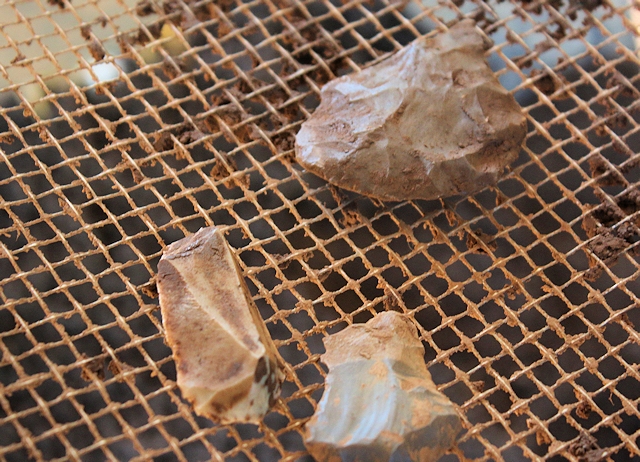
Mr. Loughlin shared with me that an ancient sinkhole was found which contained numerous projectile points and stone shavings dating to the Early Archaic period (8,000-6,000 B.C.). This time period was reached with radio-carbon dating of a nut that was found buried at the site.
The theory is the sinkhole attracted the ancient, nomadic people due to its close proximity to the Cumberland River (Lake Barkley) and an abundant supply of stone.
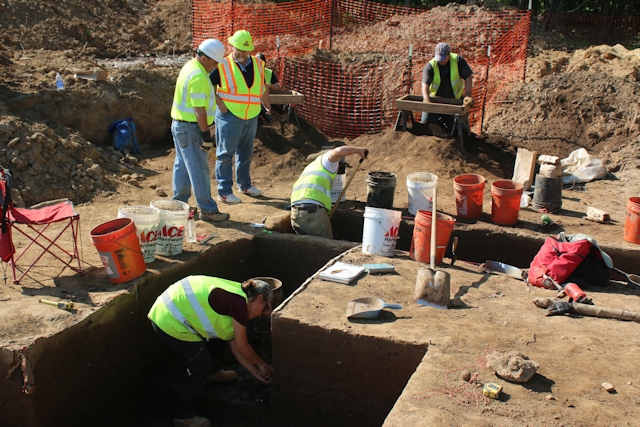
What is unknown, and is mysterious to researchers, is why this area was abandoned for several thousands of years after being the location of a camp for several centuries.
I was able to witness some of the students “screening” the dirt and
saw some of their findings. One student showed me her finds that were some of the most significant – sharp, stone tools that were used for various tasks during that time period.
According to a fact sheet provided by the Kentucky Transportation Cabinet, artifacts from the site include a variety of stone tools including spear points, drills, scrapers, and other tools, as well as abundant flakes produced during stone tool manufacture.
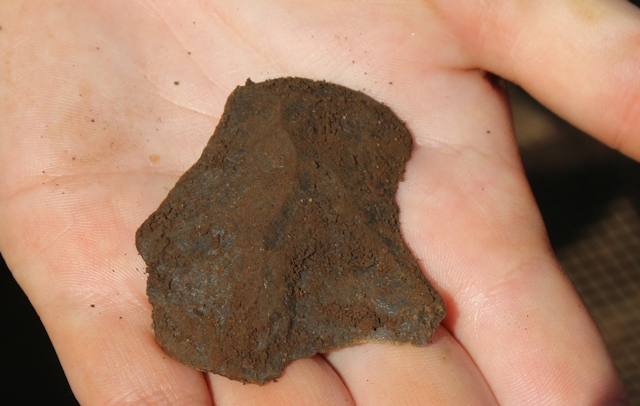
These artifacts present important evidence about the range of activities carried out at the site, which apparently include stone tool manufacture and maintenance, plant processing, and hide working.
The distribution of these artifacts across the site provides data about how the site was organized, such as the locations of living areas and activity areas. Moreover, the presence of burned animal bone and carbonized plant remains provide data about the types of plants and animals that were consumed by site inhabitants.
These remains also provide information about the environmental context of the site at the time it was occupied, which has likely changed dramatically over the past 8000 years.
Archaeologists are hoping that this dig will help answer a few of the many questions pertaining this little-understood period in Kentucky’s prehistorical age.
I also spoke with James Hixson, archaeologist for the Kentucky Transportation Cabinet. He said this was a “top three” find in his 26 years of work experience.
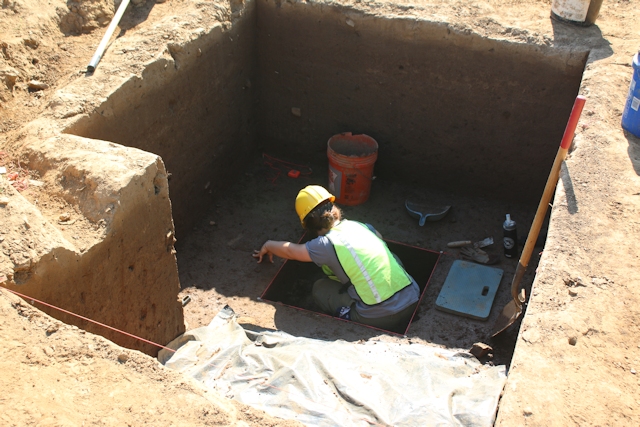
The recently-discovered, ancient sinkhole and associated camp is located on the south side of US 68. In the 1930s when the first bridge was built, officials believe that fill dirt from excavating the existing road was placed on top of the ancient site, and no one was aware of its existence until a few months ago.
On the north side of the highway, a well-known site exists call the “Canton Site”. This area, which has been known about for decades, revealed a much more recent settlement dating from the Mississippian period, or about 1,000 A.D. This is known as the “Canton Site” and was discovered as early as the 1800s.
Evidence of this site includes notched arrowheads and piece of ceramic vessels as well as strong evidence of a permanent home.
The Lake Barkley bridge project is scheduled to be finished in the fall of 2017. Plans for the new bridge and four-lane roadway include a cul-de-sac and parking area that contains signage of the recently-discovered ancient camp, the Canton Site, and the history of Canton in the 1800s.
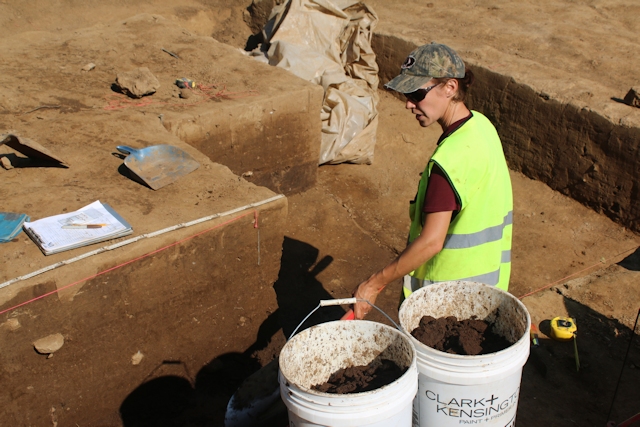
The ancient site is closed to the public as construction continues on the new four-lane highway and bridge across Lake Barkley.
I was fortunate to be able to see and experience the Early Archaic period site first hand today. Special thanks to Keith Todd, Kentucky Transportation Cabinet spokesman for providing some of the information and renderings of the future signage.



Pingback: Five Generations of Highways in Canton, Ky - Four Rivers Explorer
Pingback: Canton, Kentucky - Four Rivers Explorer